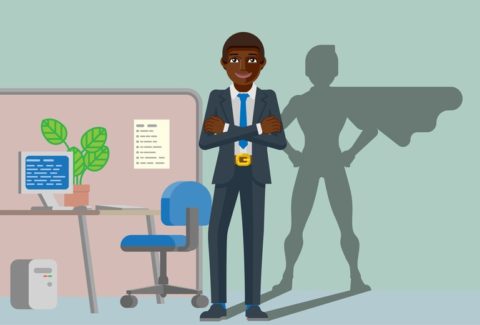Clinician Burnout: Does The System Really Care?
“Since the agency is part of a bigger system, I feel it is only part of the solution. For the agency to be successful at addressing burnout and promoting self-care, the entire system needs to be fully examined,” stated Jefferson, the CEO of the HOPE Care Center, during an executive meeting with Rodis. This was one of the initial steps to laying the groundwork, to stop the cycle of burnout for their staff and promote self-care throughout the agency. “I agree with Jeff,” said Deline, the CFO, “we have been losing money on the clinic and some of the other programs; making the needed changes will require us to really start doing things differently.”
After looking at the current epidemic of burnout from the perspective of the patients and clients and from that of the clinicians and advocates, as well as the agency, it is now time to consider the perspective of the system as a whole. But, first, does the system really care about this epidemic of clinician burnout?
In the first three articles, I described a total of 11 benefits that come from addressing burnout and promoting self -care.
As Jeff and Deline stated, for the agencies to be successful at addressing burnout among their staff, solutions need to be viewed from a system’s perspective as well. Below are four reasons why it is crucial for the entire system to help address burnout and promote self-care.
Empowering clinicians and advocates
In the book Journey to Empowerment, the SWEET Institute fomarlizes empowerment as a ultimate tool that can at times be more powerful than several other common help and self-help methods “I come to work not knowing what to expect. This in itself would be fine if I felt supported, with a space to reflect, to be introspective, and provided with regular supervision and training,” Eileen uttered this with an anxious voice, during an open forum with all staff at the HOPE Care Center. Some of us, more so than others, like the unpredictable nature of the work, putting out fires, handling urgent and emergent matters. But, like Eileen suggested, if we are not given a safe place to process and reflect, and are not provided with regular supervision and training, this drive will slowly and surely fade away.
How does the system help empower clinicians and advocates? “Ensuring that supervision time is protected, providing a safe place for staff processing, and enforcing that each department within the agency makes training available for staff,” responded Sylvain. “In a world where audits are sadly about whether the treatment plan was signed on time or whether it was co-signed by the MD, what if we started to evaluate agencies based on show rate, engagement strategies, and on how well we ensure integration of services, so that our patients and clients get the best care possible; what if de-escalation skills seminars were made mandatory for all staff and required recertification on a regular basis?
Our staff would feel more empowered, more able, and better ready to manage crisis situations. Staff would be able to pay more attention to engaging patients and clients and less attention to just making sure the treatment plan was ready by the next visit,” passionately articulated Jena, the Head Nurse. That, indeed, goes beyond the agency; it lies with the system. Do we want to prevent burnout for our staff and promote self-care? The system has a major role to play, and it starts with empowering clinicians and advocates.
Empowering patients and clients
“Patient-centered,” “client-centered,” and “recovery” are all nice words and terms, but they can simply be buzzwords that often sound empty. To me, it is impossible to embody these things in our practice and help to empower our patients and clients when we do not feel empowered ourselves. It’s simple. It’s parallel process.
I am not going to be able to be collaborative when all I am thinking about is closing one note and moving on to the next client, without having an opportunity to reflect on the work that I do,” Rick articulated these words when it was his turn to speak. He added, “I believe in empowering my clients, and it starts with empowering myself as a clinician, otherwise, client empowerment will be just a fantasy.” Empowering patients and clients is the right endeavor, and as Rick said, “It starts with empowering our clinicians.” Being successful at empowering our patients and clients is therefore one more reason why it is essential for the system to address burnout in the clinician.
Decreasing staff turnover
In an article entitled, 5 Ways to Decrease Employee Turnover, Forbes talks about flexible scheduling but falls short of bringing up the epidemic of burnout. “When I first came to the HOPE Care Center, part of my strategic plan was centered around staff recruitment. Making any sustainable change would require a sustainable staffing matrix. However, I soon realized this was more than a recruitment issue; we had a staff turnover crisis that needed to be fixed immediately,” Elena, the Chief Medical Officer uttered these words, in an almost resigned way. She then added, “When I thought staff recruitment was going to be a challenge, dealing with staff turnover was exponentially harder to manage. It is so complex. It is multifactorial, and it has to do with a little bit of everything. It is also cultural and structural, and it reflects the sense that staff is not valued, with limited allotted resources, as Rick said. But again, like Jeff and Deline stated, an agency that is already struggling financially needs a system change to really address staff turnover.”
Staff turnover has several ramifications, including and not limited to consistent staff onboarding and transitioning; decreased productivity, compromise of care, and overall waste. The system overall has reason to help agencies with decreasing staff turnover, which starts with addressing staff burnout.
Restoring Trust
“I am committed to addressing burnout and promoting self-care for the staff here at Hope. This will require resources, and I do not want to start and then stop, because of a lack of capital. We need to make a shift, both a structural and a cultural shift, and I am committed to it,” said Jeff, in a firm voice. “We should be able to apply for a training grant that would cover several days for our staff to take off and dedicate to training. We could also account for protected time for supervision, self-care groups, and help restore the trust of the staff,” added Deline.
Restoring trust is essential for a group of clinicians and advocates, who have been the victims of burnout and vicarious trauma.
“Since the agency is part of a bigger system, I feel it is only part of the solution. For the agency to be successful at addressing burnout and promoting self-care, the entire system needs to be fully examined,” stated Jefferson, the CEO of the HOPE Care Center, during an executive meeting with Rodis. This was one of the initial steps to laying the groundwork to stop the cycle of burnout for their staff and promote self-care throughout the agency.
The system has its role to play. It needs to empower clinicians and advocates, patients and clients, if there are interests in decreasing staff turnover and restoring trust. If burnout is to be addressed and prevented and self-care promoted, we all have to work together. And, these efforts must be supported by the system, if we are to reach our goals and continue working effectively and with the passion with which we came into this field.









